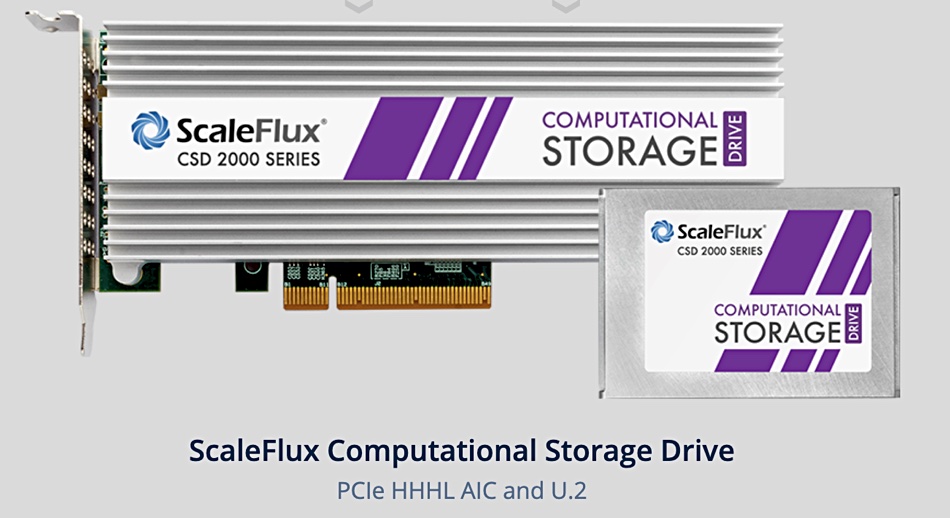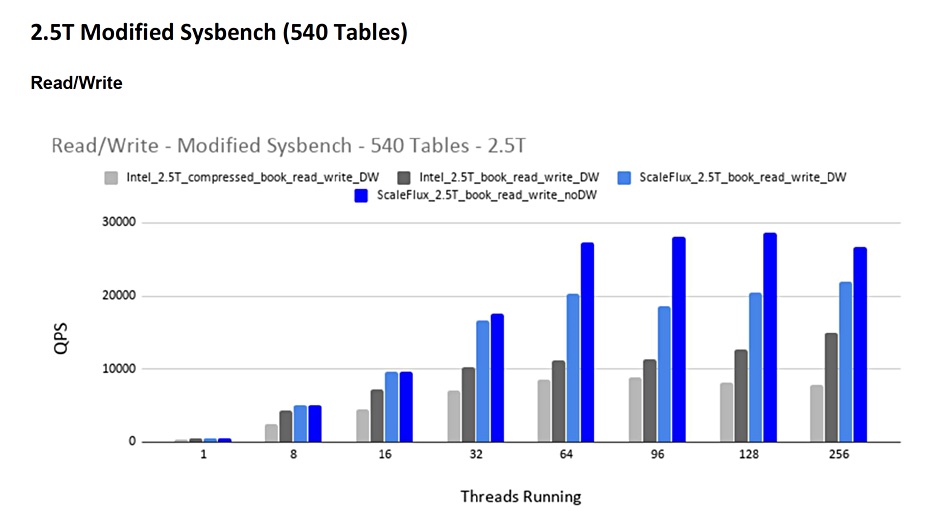Percona’s open source MySQL database runs faster with ScaleFlux computational storage SSDs. And they have the benchmarks to prove it.
The companies compared the ScaleFlux CSD 2000 with an Intel DC P4610 SSD and found that the CSD 2000 was up to three times faster in certain workloads such as compression
In their test results document, published today, Percona and Scaleflux state “Our testing verifies ScalesFlux’s claims that if a customer has a Write heavy or mixed Read/Write workload the ScaleFlux drive can improve their performance.”
This sounds attractive, but will customers bite?
The basic idea of computational storage is this: dedicated hardware in storage drives perform operations such as compression and decompression and video transcoding faster than a drive’s host server.
For it to succeed, any computational storage device needs to be faster than using the same host server with ordinary (non-computational) SSDs. So ScaleFlux passes this table stakes test. But is this enough to overcome any reluctance by customers to rely on single-sourcing computational storage drives to get the performance they want? Traditionally, customers prefer multiple sources for components such as disk drives and SSDs, to avoid supplier lock-in,
And then there’s the price performance angle. The extra queries per second delivered by the CSD 2000 have to be affordable and worth the money. Expect a spreadsheet blizzard from computational storage suppliers trying to prove their case.
The CSD 2000 benchmarks
The CSD 2000 includes hardware GZIP compression that effectively doubles capacity and delivers 40 to 70 per cent more IOPS than similar NVMe SSDs on mixed read and write OLTP workloads, according to Scaleflux.

For its benchmarks, Percona and ScaleFlux compared a TB CSD 2000 to an Intel DC P4610 SSD with 3.2TB capacity. This is a 64-layer, TLC, 3D NAND SSD with an NVMe interface running across a PCIe gen 3.1 x 4 lane connection.
The CSD 2000 is also an NVMe/PCIe gen 3 x 4 device, using 4TB ofTLC 3D NAND and with an FPGA doing storage computations, like compression, in the drive’s enclosure. As well as compression it has a customisable database engine accelerator. There are more details in its datasheet.
Percona’s database has a DoubleWrite Buffer to protect against data loss and corruption, in which a set of data pages are pulled from a buffer pool and held in the DW buffer until they are correctly written to the final database tablespace. The CSD 2000 has an Atomic Write feature which renders the Double Write Buffer redundant and it can be turned off, speeding database writes. Intel’s P4610 has no atomic write feature.
Read-only, write-only and mixed read/write workloads were tested with Percona v8.0.19 with a Sysbench data schema. The Intel drive used Percona with the DoubleWrite feature and, separately, server-based compression. The ScaleFlux drive was tested with and without the DoubleWrite feature being turned on.
In general, the ScaleFlux drive was faster than the Intel SSD, especially with DoubleWrites turned off. Here is a chart of mixed read/write results to show this, with a 2.5TB, 540 table, data set:

As the number of threads increases beyond 8 up to 256 the ScaleFlux advantage grows, with the Atomic Write becoming significant at 64 threads and up (bright blue bars). Turning off Percona’s DoubleWrite allowed the CSD 2000 to boost its performance from just over 2,000 queries per second at 64 threads to more than 2,700.
At the 64 to 128 thread level, the ScaleFlux Drive is up to three times faster than the Intel drive (light grey bars) when the host server is doing the compression in software.
Read more in a blog.








